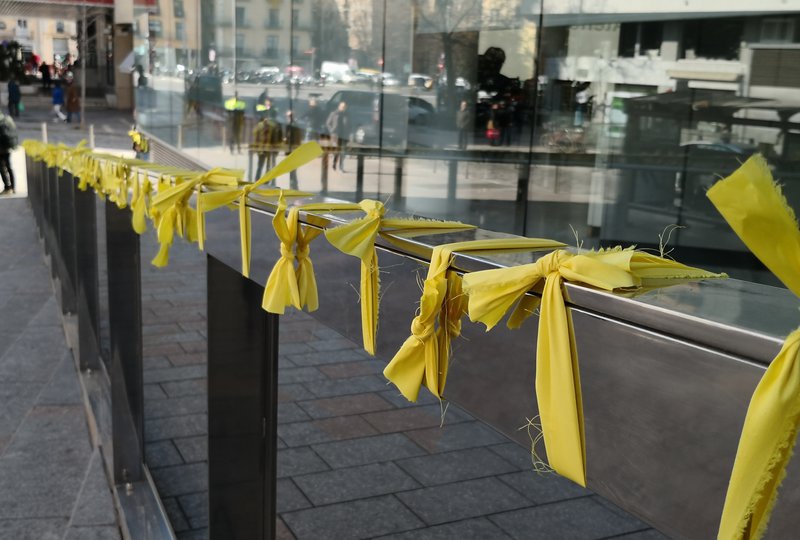THE LAST WORD
The power of SYMBOLS
I had family staying this week, but before they came out to us in the sticks, they spent a few days in Barcelona. It was their first time in the Catalan capital, and they loved it. For a few days they were content wandering around taking in the sights and the atmosphere (although getting stung for €30 for three beers on La Rambla was a low point — my fault, I should have warned them).
Despite covering the whole city in their wanderings there was one place they went back to - Montjuïc. I can understand why, as the hill overlooking Barcelona has plenty to offer, such as the national gallery, the Olympic stadium, the botanical gardens, the cable car, the castle, and so on. The fountain, of course, was a highlight, and they later asked me about the four free-standing columns in front of the palace on the hill.
While no expert, I told them what I knew, that they replace the original columns that once stood nearby that were designed by Josep Puig i Cadafalch for the Universal Exposition held on Montjuïc in 1929. I told them what I’d been told, that they symbolised the four stripes on the Catalan flag and were demolished by the Primo de Rivera dictatorship.
As I say, I’m no expert, as you will be able to tell if you read the article on pages 36 and 37, which explains the story of the columns in more detail - with how that tale turns out yet to come in another issue. One thing you’ll learn from the article is that the columns were not explicitly meant to be a symbol of Catalan nationalism - although it seems likely somehow - and the architect himself did not refer to them as such until after they had been demolished and he was in exile. In other words, the columns came to symbolise Catalan nationalism, to the extent that Primo de Rivera wasn’t taking any chances and had them removed before the world turned up.
Whatever the case, it’s an example of the power of symbols, and how innocuous objects can be seen as an existential threat. A recent example is the row over the yellow ribbon symbols to show support for the Catalan independence leaders being tried in the Supreme Court. President Quim Torra was ordered to take down a banner with the symbols from the government building by the electoral board in the run-up to April’s general election. He complied, but after the deadline, and now faces a trial for disobedience that could see him barred from office. Once the election was over, Torra had the banner put back, but further objections saw the courts order the “partisan” symbols be removed for good.
A storm in a teacup? Perhaps, and if you look at such incidents in a rational way, it’s clear that situations like the current political conflict will be decided in the courtrooms, at the ballot box or the negotiation table, and a few yellow ribbons tied to lampposts are unlikely to be the decisive factor.
But, we are human and we don’t (yet) think like computers. Even in ancient times tribes would strike down or capture the symbols of their enemies when defeating them. That continues today: the first thing American troops did after taking Baghdad was publicly pull down a statue of Saddam Hussein even though his regime had been swept away.
So, we can ask how a few strips of yellow plastic or how four columns meant to add grandeur to a venue can be a threat to the state, but they are signs of how we remain very much human, and how symbols and the importance we give them are here to stay.

